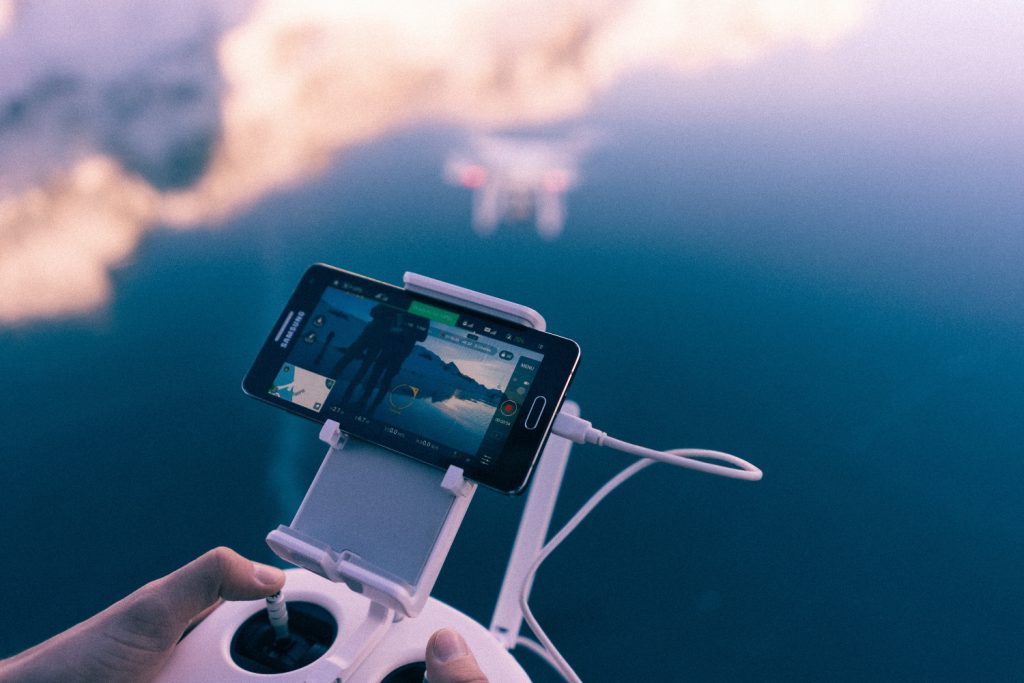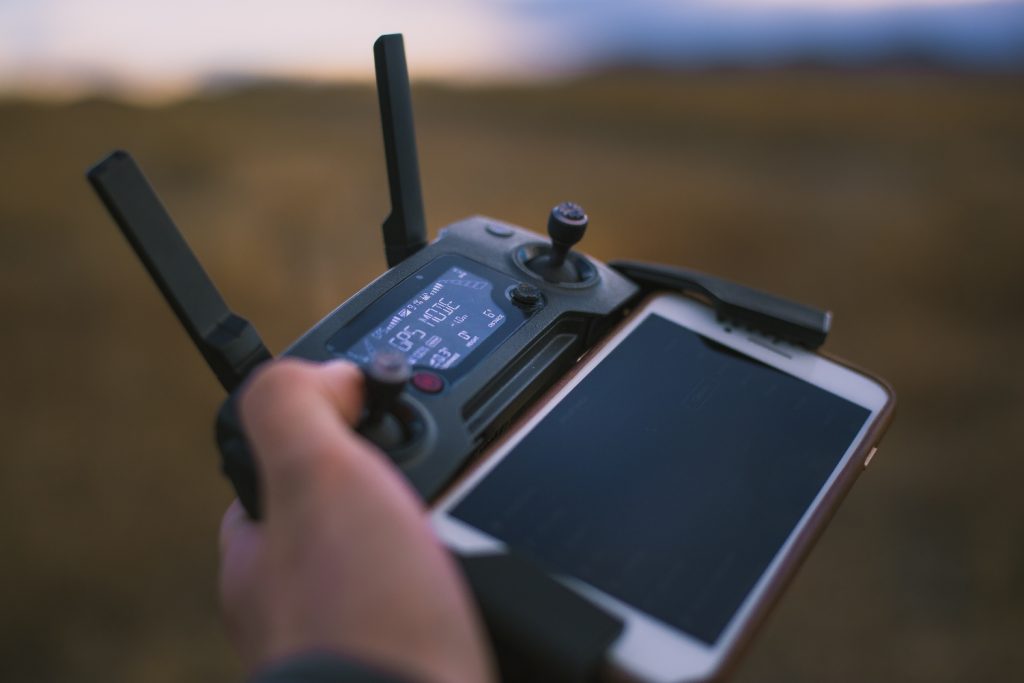Drone Controllers: A Look at How They Work, Important Terminology, and Why They’re Unique in the RC Aircraft World
BY Zacc Dukowitz
19 September 2019Drone controllers are everywhere in the drone world, but have you ever stopped to think about how they actually work?
In this article we’ll start with the basics of drone controllers, looking at how drone remote controllers work and the different features they give drone pilots. We’ll also take a look at what makes drone controllers unique in the world of RC aircraft, and give you some quick tips for troubleshooting connection issues between your drone and its controller.
But before we dive in it’s important to define our terms.
For the purposes of this article, when using the phrase drone controller we are talking about the remote control a drone pilot holds in his or her hands that makes the drone do what the pilot wants. A flight controller, on the other hand, is the circuit board that translates information from the drone remote controller into action.
A drone controller may also be called a drone radio transmitter, a drone radio controller, or simply a drone remote controller.
Table of Contents
- How Do Drone Controllers Work?
- Should I Shop for a Drone Controller?
- Drone Won’t Connect to Controller—Troubleshooting Connection Issues
- What Makes Drone Controllers Unique in the RC Aircraft World
- Important Terms—A Look at How Information Is Relayed from the Controller to the Drone
How Do Drone Controllers Work?
A drone controller works by sending a radio signal from the remote control to the drone, which tells the drone what to do.
Radio signals are sent from the radio transmitter in the drone controller and received by the drone’s receiver. This is why the drone controller is sometimes simply called the drone radio transmitter or the drone radio controller.
FPV Screen on Your Drone Controller
Many of the controllers for the top drones on the market do not have screens attached to the drone controller that comes with the drone.
If you buy a drone remote controller that doesn’t have a screen then you’ll usually be able to use your smartphone or tablet as a screen in order to fly FPV (First Person View).
Drone Remote Controller Terminology
There are four primary ways to move a drone using your controller:
- Roll. Moves your drone left or right in the air, literally “rolling” your drone.
- Pitch. Tilts your drone forward or backward.
- Yaw. Rotates your drone clockwise or counterclockwise, allowing you to make circles or patterns in the air.
- Throttle. Controls the amount of power sent to your drone, which makes the drone go faster or slower.
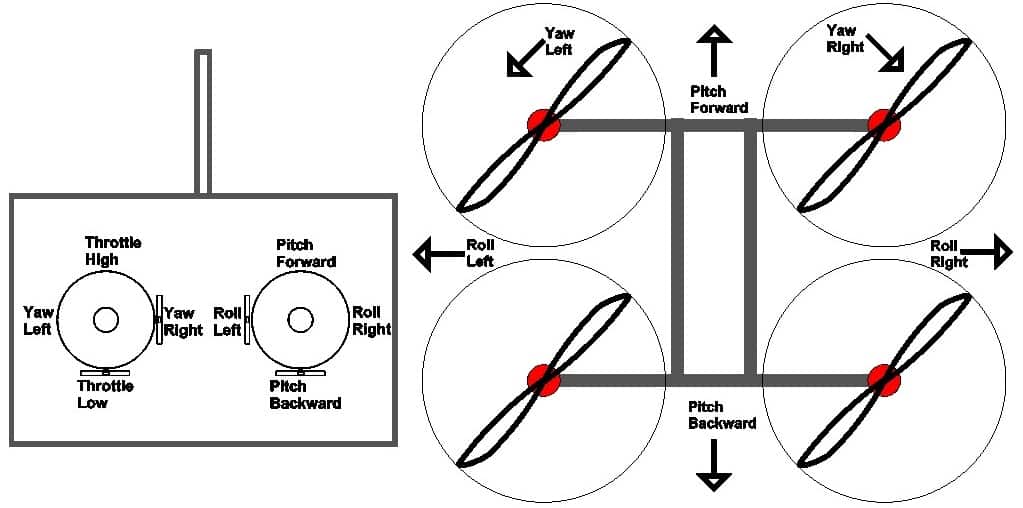
Basic Drone Controller Features
When flying, the harder you push the stick in a certain direction, the more power will be transmitted to the drone in that direction.
If you’re just learning how to fly, push the sticks gently until you get the hang of things. Also, keep in mind that each controller is different. Even if you have some experience flying you’ll want to get a feel for a new drone controller before going full throttle.

Right Stick
The right stick lets you control the roll and pitch of your drone, allowing you to move the drone right/left as well as forward and backward.
Left Stick
The left stick lets you control the yaw and throttle of your drone, allowing you to control the height at which you fly and letting you rotate the drone clockwise or counterclockwise in flight.
Trim Buttons
Each drone remote controller has its own trim button:
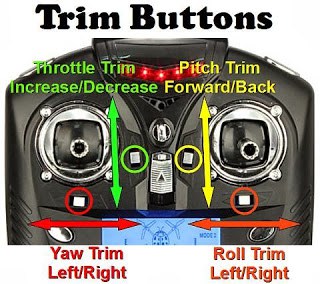
If you notice your drone tilting toward one direction when you first start flying this probably means it needs to be trimmed. You can use the corresponding trim button to correct the balance as needed.
Should I Shop for a Drone Controller?
Since all drones come with their own remote controls, it’s not all that common to be on the market to buy a separate remote control for your drone (unless your controller is broke, of course, or if you’re building a DIY drone).
This means that, in general, getting a great controller for your drone starts with getting a great drone.
The top drones out there also have good controllers—check out these free guides to see a list of the best RC drones on the market:
DJI’s Smart Controller
Although you’ll usually get a good controller by getting a good drone, DJI does sell a separate drone remote controller called the Smart Controller.
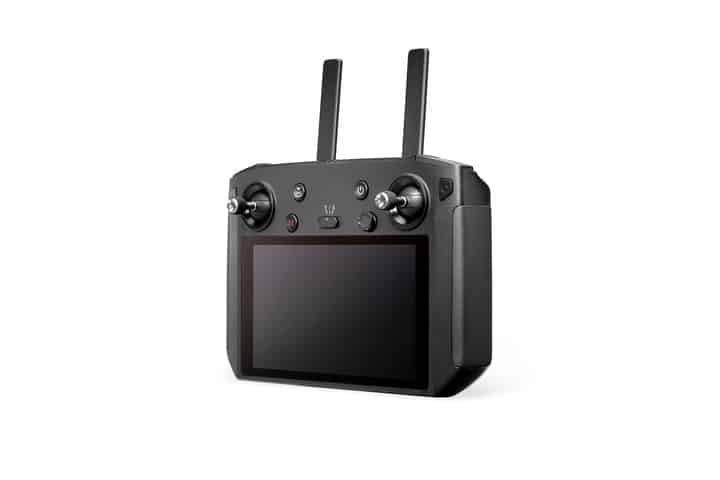
Photo credit: DJI
The Smart Controller is compatible with all of DJI’s Mavic 2 models, including the Mavic 2 Zoom, the Mavic 2 Pro, and the Mavic 2 Enterprise Series.
[Note: The DJI website says that the Smart Controller can be used with any “aircraft equipped with OcuSync 2.0”—but only Mavic 2 drones have OcuSync 2.0, as far as we know.]
Based on our research, DJI’s Smart Controller might be worth getting if you have a Mavic 2 you use for commercial work and want an upgrade.
Here are the highlights:
- Built-in display with good screen brightness, which means you don’t have to use your phone to fly FPV
- DJI mobile app features are baked in
- Allows you to post pictures/video directly to the internet from the controller
- Short setup time
- Comes with an HDMI output for monitors
The price is steep though—the Smart Controller is currently selling for $749 on the DJI site.
Drone Won’t Connect to Controller—Troubleshooting Connection Issues
Drone won’t connect to controller?
Try:
- Making sure your drone controller batteries are fully charged (sometimes low batteries can lead to issues with connectivity)
- Switching out your controller’s batteries with fresh ones
- Making sure you’ve properly followed the setup instructions that came with the drone
- Manually link the drone’s remote control to the drone
If the above actions didn’t help get your drone connected to your remote control, we recommend you try posting the problem in a drone-focused community forum or private Facebook group to see if someone else might have run into the same issue.
When posting, remember to be as specific as possible. List the model of your drone and the steps you’ve already taken to troubleshoot.
Here are a few links to get you started:
- The UAV Coach community forum (forum)
- DJI’s official forum (forum)
- Commercial sUAS Remote Pilots (Facebook group)
What Makes Drone Controllers Unique in the RC Aircraft World
A Radio Controlled (RC) aircraft is simply any small flying machine that is controlled remotely.
All drones are RC aircraft, but not all RC aircraft are drones.
In fact, RC aircraft precede modern drones by over a hundred years. The first RC aircraft were hydrogen-filled model airships, which were created and flown in the late 19th century as a music hall act. These airships were controlled using a spark-emitted radio signal.
Although RC traditionally refers to Radio Controlled it is often used to mean Remote Controlled.
The good news is that, since radio is the means by which aircraft can be flown remotely, exchanging remote for radio doesn’t really change the meaning of RC. Either way, we’re referring to an aircraft being controlled by a pilot standing on the ground using a drone controller or some kind of radio transmitter that connects with the craft via radio signals.
Multi-Rotor vs. Single Motor
One big difference between drones as we think of them today and all other RC aircraft is the difference between how they’re powered—that is, the difference between multi-rotor crafts and single motor crafts.
[Note: A rotor is a hub that attaches a drone’s propellers to the drone. Each rotor on a drone has its own motor, so a multi-rotor drone is also a multi-motor drone.]
Modern drones are all multi-rotor aircraft.
This means they have multiple rotors—usually at least four, and sometimes as many as eight or even twelve. When you hear about a quadcopter or a hexacopter, these are all references to how many rotors the drone has (a quadcopter has four rotors, a hexacopter has six rotors, and so on).
On the other hand, all other remote-controlled craft, be them a car or a boat or a plane, are controlled with a single motor.
And the difference between multi-rotor and single motor directly impacts the way drone controllers connect with the aircraft they control, as well as the kind of control a pilot has over his or her aircraft.
A pilot flying a single motor aircraft has precise control over that single motor. He or she can use the throttle on their controller to give just a little more power or to reduce the power just a little bit, and those changes in power directly translate to the power output and the resulting speed of the craft.
Compare the throttle on a single motor craft to the equivalent on a drone controller.
Since it would be impossible to control multiple rotors at the same time—that is, to have a throttle for each motor that the pilot has to constantly balance with the others—flight controllers allow a drone to stay balanced in the air, and determine which rotors get power at different times in order to maintain a steady flight.
Important Terms—A Look at How Information Is Relayed from the Controller to the Drone
As you may have already noticed, it can be hard to talk about drone controllers without getting into the specific components of a drone.
To clarify our terms and how everything works in harmony to keep a drone in flight—not to mention allow a drone pilot to control the drone—let’s take a look at the different primary parts of a drone.
Drone Controller/Drone Radio Transmitter
The drone controller allows the drone pilot to control the drone using radio signals.
Drone Receiver
The receiver on a drone is an electronic device that uses built-in antennas to receive radio signals from the drone controller.
But the receiver doesn’t just receive signals from the drone controller. It also interprets the signals and converts them into alternating current pulses.
This information is then sent to the flight control board, or flight controller, which puts the information into action by controlling the drone as indicated by the original radio signals.
Flight Controller
A flight controller is a circuit board that manages the drone’s flight.
Put simply, the flight controller’s job is to control the power, or RPM (Revolutions Per Minute), for each individual motor on the drone in response to the information received from the drone controller.
When a drone pilot shifts the joystick to the right on the drone controller, the drone flight controller is what actually makes the drone move to the right.
You could say that the flight controller is basically the nervous system of the drone. It receives raw information from the drone controller, transmitted via the receiver, and then makes the corresponding movement to the drone’s
rotors that will produce the desired outcome.
But the flight controller’s job is much more complex than simply feeding power to the drone’s motors. Remember what we were saying above about the difference between multi-rotor and single motor crafts?
Since drones have multiple rotors, the flight controller’s job is to take the information sent by the drone controller and then act on it so that each individual rotor receives the appropriate amount of power to execute the requested movement.
When a flight controller is set up well, the drone pilot’s commands sent via the drone controller should correspond exactly to how the drone moves in the air. Some flight controllers can be configured and programmed by the pilot, but doing so requires a fairly in-depth level of knowledge.
Electronic Speed Controller
Electronic Speed Controllers (ESCs) translate the signal to the electrical supply, controlling the rotational speed of the motor by adjusting electric current (Amp) to ensure the motors run smoothly and efficiently.
With a drone, each motor has its own ESC, which connects directly to the flight controller. Affer the flight controller computes the exact inputs needed to make a certain maneuver it directs the amount of power needed through the ESCs to the drone’s motors.
Given the complexity of flying with multiple rotors, drone’s ESCs have high refresh rates to ensure that balance is maintained while in flight.
Phew.
As you can see, a lot has to happen for a drone controller to be able to tell a drone what to do.
Just turning your drone to the right requires the radio signal to be sent from the drone controller, received by the receiver, turned into action by the flight controller, and then sent through the ESCs to the drone’s motors, where the turn can then be executed.
Now think of what’s required to keep your drone steady when a strong wind suddenly comes up—that’s pretty impressive.
We hope you found this article on drone controllers useful. Blue skies and safe flying out there folks.
